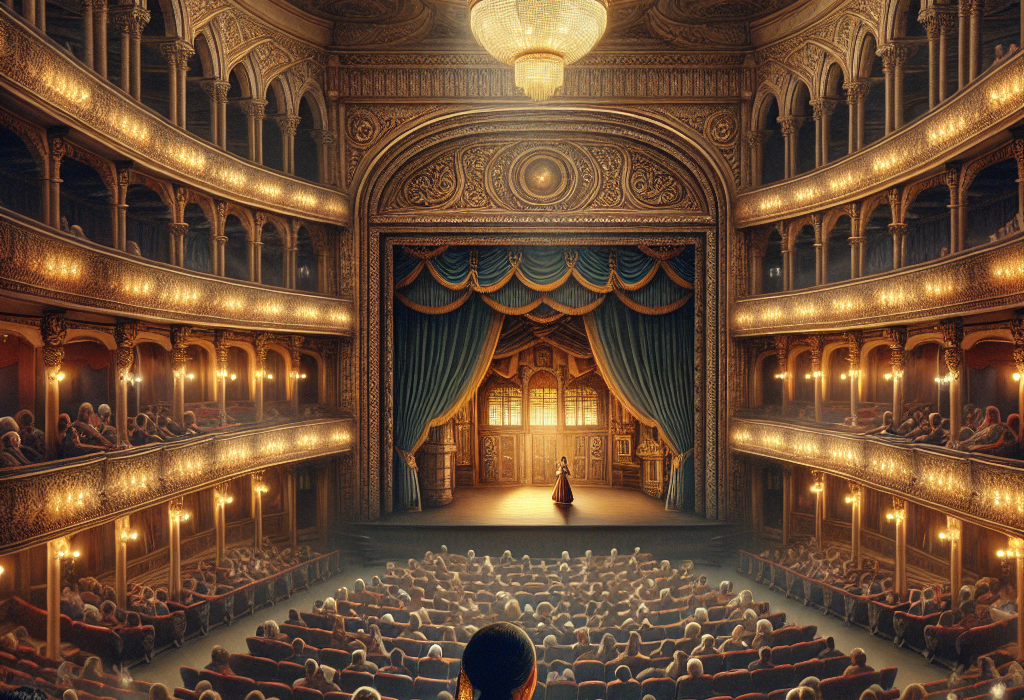Theater has been a vital part of human culture since ancient times, serving not only as a form of entertainment but also as a medium for storytelling, social commentary, and artistic expression. From the dramatic amphitheatres of ancient Greece to the dazzling stages of Broadway, theater has continually evolved, reflecting and shaping society with its unique blend of dialogue, performance, and spectacle. This article delves into the rich history, significant contributions, and enduring appeal of theater.
A Glimpse into the Past
Origins and Ancient Contributions
Theater’s roots stretch back over 2,500 years to the dawn of civilization. The earliest recorded theatrical events originated in ancient Greece, with the Dionysia festivals honoring the god Dionysus. These festivals gave rise to Greek tragedies and comedies, with playwrights like Aeschylus, Sophocles, Euripides, and Aristophanes laying the foundational structures of Western drama.
Roman theater, heavily influenced by Greek traditions, further developed the art form by introducing architectural innovations and expanding theatrical subject matter. The Roman coliseums and amphitheaters were not just venues for dramatic performances but also hosted gladiatorial combats and other public spectacles, reflecting the diverse entertainment appetite of the time.
Medieval and Renaissance Innovations
After the fall of the Roman Empire, theater experienced a hiatus in Europe, with performances mainly confined to religious contexts like mystery and morality plays. However, the Renaissance sparked a theatrical revival, emphasizing humanism and the rediscovery of classical texts.
The Elizabethan era, marked by the prodigious contributions of William Shakespeare, transformed theater into a profoundly influential cultural force. Shakespeare’s works, with their rich language, complex characters, and universal themes, continue to resonate deeply with audiences worldwide.
The Modern Era
The Rise of Broadway and the West End
The turn of the 20th century saw the emergence of iconic theater districts like Broadway in New York City and the West End in London. These venues became synonymous with high-quality productions, bringing musicals, dramas, and comedies to a global audience. Pioneering shows like "Oklahoma!", "Les Misérables," and "The Phantom of the Opera" revolutionized musical theater, blending memorable scores with compelling narratives.
Experimental and Contemporary Theater
Theater in the 20th and 21st centuries has also become a laboratory for innovation and experimentation. Movements like absurdist theater, led by figures such as Samuel Beckett and Eugene Ionesco, challenged traditional narrative structures and concepts of meaning. Contemporary theater continues to push boundaries, incorporating multimedia technology, immersive experiences, and interactive elements to engage audiences in novel ways.
The Essence and Impact of Theater
A Mirror to Society
Theater’s power lies in its immediacy and intimacy. Unlike film or television, which offer mediated experiences, theater unfolds in real-time before a live audience. This direct engagement fosters a unique connection between performers and spectators, often making the experience more visceral and impactful.
Historically, theater has been a powerful tool for social critique and change. Plays like Arthur Miller’s "The Crucible" and Lorraine Hansberry’s "A Raisin in the Sun" have highlighted crucial social issues, prompting reflection and dialogue.
Educational and Therapeutic Benefits
Beyond entertainment, theater serves educational and therapeutic purposes. It develops critical thinking, empathy, and communication skills, making it an integral part of educational curricula worldwide. Drama therapy, recognized for its healing potential, employs theatrical techniques to help individuals express themselves, process emotions, and foster personal growth.
The Global Stage
While Western theater often dominates the spotlight, performance traditions from around the globe offer rich diversity. The intricate Noh and Kabuki theaters of Japan, India’s elaborate Kathakali, and China’s vibrant Peking Opera showcase different cultural narratives, aesthetics, and performance styles, enriching the global theatrical tapestry.
The Future of Theater
As we navigate the digital age, theater faces both challenges and opportunities. The COVID-19 pandemic, for instance, forced theaters to innovate, leading to the rise of virtual performances and hybrid models. These adaptations could democratize access to theater, reaching audiences beyond geographical constraints.
However, the essence of theater—a shared human experience—remains irreplaceable. Whether through the echo of ancient amphitheaters or the vibrant energy of contemporary stages, theater’s timeless allure persists, continually reflecting the depth and breadth of the human condition.
Conclusion
Theater, with its storied history and dynamic evolution, remains a cornerstone of artistic and cultural expression. Its ability to mirror society, provoke thought, and evoke a wide range of emotions ensures its enduring relevance. As we look to the future, theater will undoubtedly continue to captivate audiences, evolve with the times, and enrich our collective human experience.

